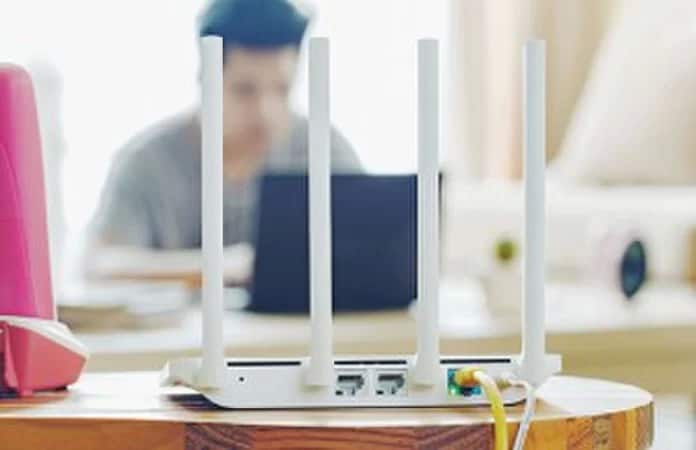f your Wi-Fi seems to be slow in some rooms, the router may not be in the best position. Wi-Fi doesn’t travel much, especially through metal and concrete. Thus, it is important to determine the best place for the router.
It is tempting to place the Wi-Fi router wherever there is space, without thinking too much, but it is a mistake. A Wi-Fi signal travels only up to this point, and the more walls, libraries or other materials it meets, the shorter the distance. If the Internet seems slow or mottled on your phone or tablet, check the Wi-Fi signal strength and check for channel interference.
If you find that you don’t have a stable signal in some areas of your home, even on clean channels, it’s time to consider moving your Wi-Fi router. You may not be in the best place to reach all corners of your home.
Place the router in a central location (or not)
You may have heard or read that the center of your home is the best place to put your Wi-Fi router, but that advice is not accurate for every home. For example, if a living room, kitchen, and garage comprise most of your first floor, placing the router in the middle of that floor could provide more coverage in your garage than in the areas you use the most.
If the room closest to the center of your home is the kitchen, following the advice of the “home center” could also be harmful, as some appliances can interfere with Wi-Fi signals.
It is useful to consider not only what you tend to do in a particular room, but also the devices that live there. While Wi-Fi in the garage may not be necessary for some people, if you have a smart garage door, a stable connection is something you need. A Wi-Fi garage door opener may not require maximum speed, but knowing that a Wi-Fi device needs a stable signal can affect the router’s positioning.
Ultimately, the router must be located near the center of the most important area of the house. Wherever you need more speed, point to the center of that position.
In a multi-level home, consider the floor or ceiling
If you have a multi-story house, you should also consider which plans are more frequent. If you imagine Wi-Fi coverage as a sphere (like earth), the router is the centerpiece. If you place the router on the ground in the basement, half of the Wi-Fi coverage sphere goes down to the foundation.
If you have two levels that you use more, the best placement to cover both floors is the ceiling on the lower floor or on the floor of the upper floor.
More importantly, do not hide the Wi-Fi router behind books or in a drawer. The Wi-Fi signal must be strong enough to penetrate the walls and floors of your home without adding additional obstacles. The best location in the room is outdoors.
Also read- How to make WiFi more powerful and faster
Separate your router from your modem
Your router should not be connected to your modem. Even if you have a combined unit of routers and modems, you can use a separate Wi-Fi router instead. If your ISP has installed your modem (and Wi-Fi router) in an awkward position (like in the basement), this is one more reason to use a dedicated Wi-Fi router. You can connect a long Ethernet cable from your modem to the best location in your home and connect your Wi-Fi router there.
If your ISP has only provided the Wi-Fi signal/modem router on the 2.4 GHz spectrum, you need to upgrade to a newer router that also offers 5 GHz. While the 5 GHz does not transmit up to At this point, you will have fewer interference problems from your neighbors. You don’t necessarily have to spend a lot. While a € 160 router offers plenty of extra features and great coverage, it’s likely that you can get away with a € 60 router if your home isn’t large.
If your house is exceptionally large and you need coverage everywhere, consider the ‘ extension of Wi-Fi signal or, for a more fluid experience, a system Wi-Fi Mesh. Most homes probably don’t need Mesh, but it also has advantages like automatic updates and automatic transfer.
With a Mesh system, your Wi-Fi source automatically switches from one router to another as you move around your home. Range extenders often do not handle the transition gracefully.
Check the Wi-Fi signal strength
After (or even before) examining these suggestions, check the Wi-Fi signal strength to see how you did the job (or what you need to do). Walk around your house and keep an eye on the signal with a smartphone to see how strong the signal is in the different rooms.
If you want to get even better coverage, try creating a heatmap. Knowing, on average, how far your router can transmit, a signal will help you determine where to put it because you will understand what its limits are.

